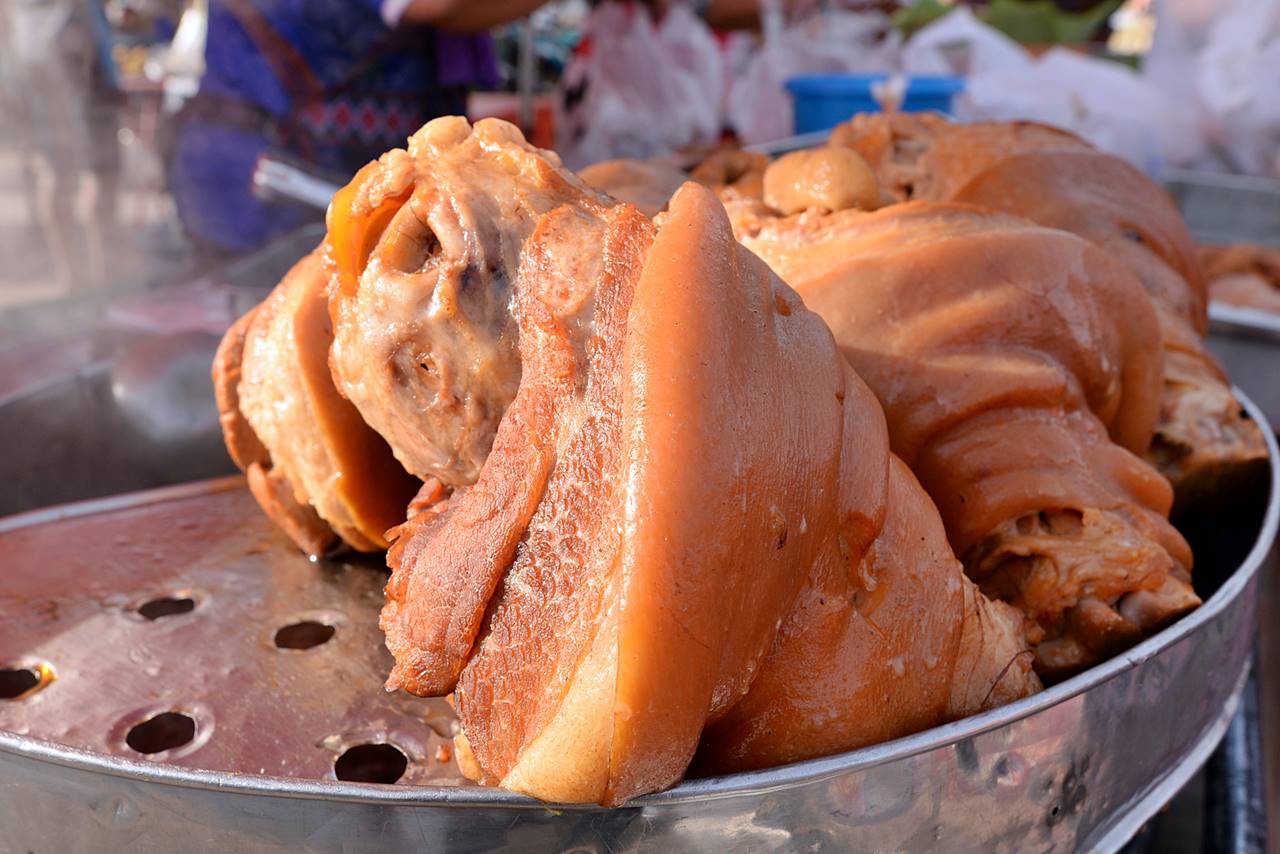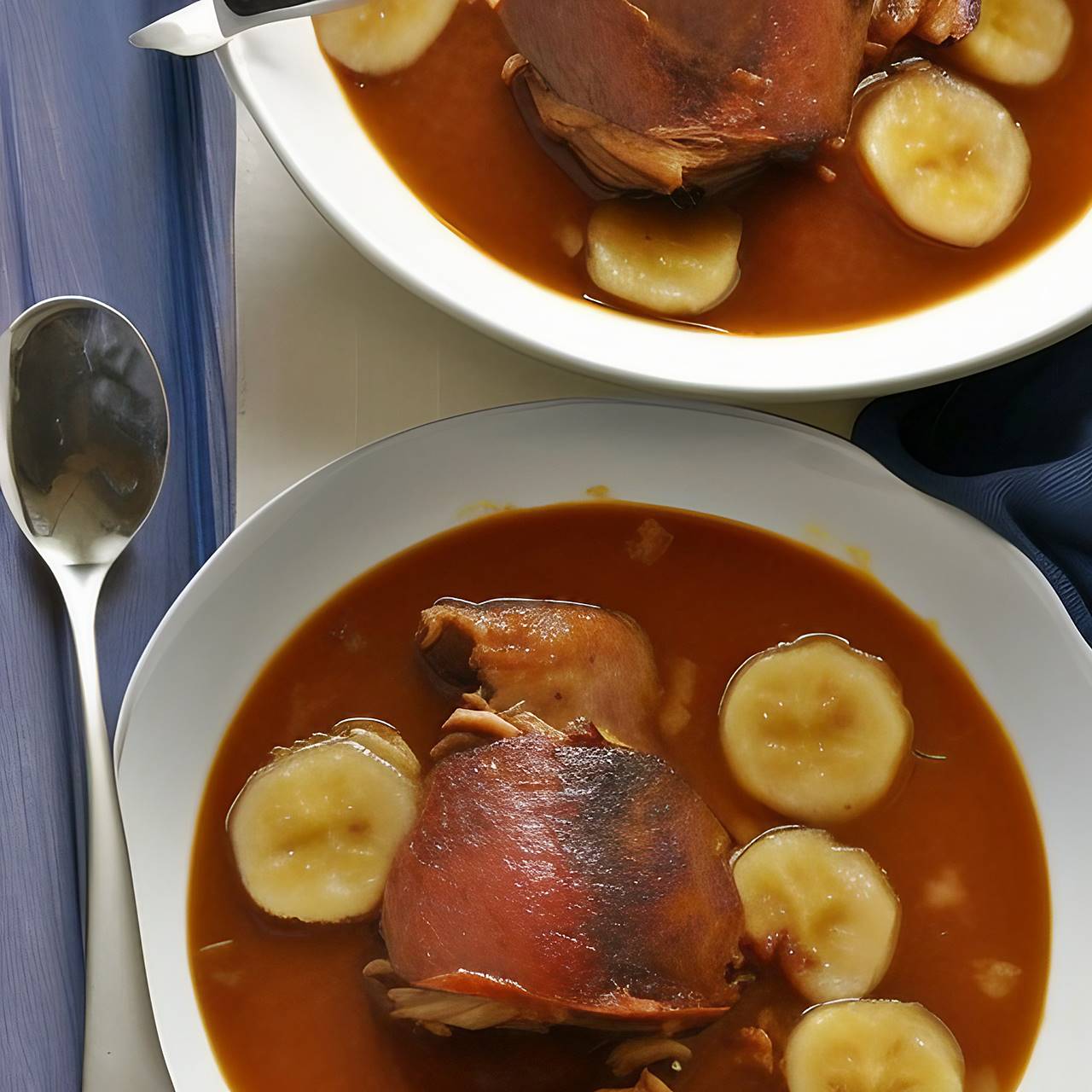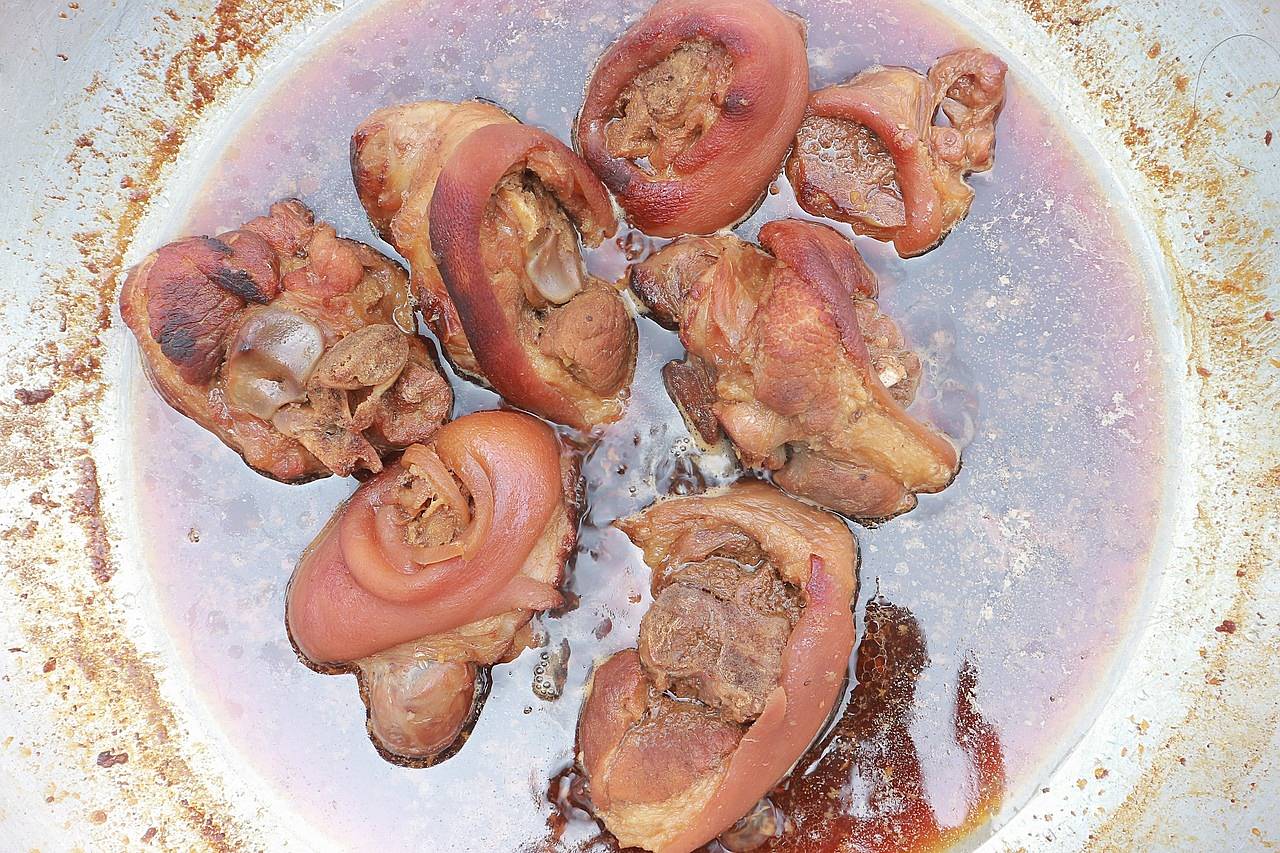Craving something new and scrumptious? Then you have to try Paksiw na Pata, a Filipino specialty combining pork hocks and banana blossoms in the most delectable way. The tangy-sweet sauce is so irresistible that it will literally make your mouth water! Not only does this dish satisfy hunger cravings with its melt-in-your-mouth tenderness – it also offers an unforgettable cooking experience as meat or vegetables are stewed using vinegar, garlic, ginger, onions, and peppercorns.
The pata version of this dish calls for pork hocks or knuckles, adding a savory flavor with the help of soy sauce. To give it an unforgettable taste and texture, brown sugar is stirred during the final few minutes of cooking as well as dried banana blossoms. With these simple ingredients you can create a delicious patang paksiw!
Also Read: How to Cook Filipino Pork Afritada
Pata paksiw is not dissimilar to inadobo or estofado, yet these latter two may include vegetables such as potatoes and carrots. For this particular recipe for pata paksiw, dried banana blossoms (also referred to as ‘puso ng saging’ in Filipino) are the only ingredients used alongside spices and seasonings. Just like Adobo, Paksiw na pata is cooked in a mixture of vinegar, soy sauce and garlic – but with the addition of sugar and banana blossoms to give it that extra kick.
It’s easy to prepare too; simply brown the meat then add all ingredients into one pot until its tender enough for the fat to melt off. To be honest though – if you’re looking for something healthy this dish may not be your cup of tea as there is no way around using fat!
The healthiness of this dish may be questionable, but one thing is for sure – it’s incredibly addicting! As soon as you taste the delicious combination of melting pork fat and rich, semi-sweet savory sauce, your mouth will water in delight. While not everyone might fancy a spoonful of this culinary creation from Philippines, Filipinos can’t seem to keep their drool at bay when they lay eyes on it!

Ingredients
- One kilo of pork pata front
- Add a quarter-cup of soy sauce for an extra boost of flavor.
- Add a half cup of vinegar to the recipe.
- Utilize half a cup of brown sugar
- a bunch of banana blossoms
- Three bay leaves, for a robust and flavorful dish.
- For this recipe, you will need one thumb-sized piece of ginger (sliced).
- For this dish, you will need a single medium-sized onion, cut into thin slices.
- 1 tablespoon peppercorns
- To create a delicious result, two cups of water are needed.
- Add salt until the desired flavor is achieved.
- oil
Steps to Cook Paksiw na Pata
- To begin, bring 6 cups of water to a boil in a pot. Once boiling, add the pork hock and allow it to cook for 15 minutes. After time is up, discard the liquid and carefully rinse off any impurities with cool running water until clean.
- Set a pot of water to boil, then drop in the peppercorns and dried bay leaves.
- Gently pour the soy sauce into the pot, then stir in the garlic.
- For a succulent pork hock, simmer the sliced meat for 1 to 1.5 hours or pressure cook it in just 30 minutes!
- Allow the vinegar to simmer for 10 minutes to bring out its flavor.
- Simmer the banana blossoms for 5 to 7 minutes, and you’re all set!
- Sprinkle the brown sugar and salt into the mixture, stirring occasionally until it simmers for two minutes.
- Serve up the steaming delicacy and enjoy with family and friends!
Tips
- Don’t simply add the meat to your stew––take an extra step and sear it! Searing over high heat helps caramelize the exterior of the pork, creating a robust flavor profile that will enhance this dish. You’ll be delighted at how much more flavorful your food can become with just one simple action!
- Let the vinegar simmer, undisturbed and uncovered for several minutes to reduce its intense acidic flavor.
- Patience is key. Cook on a low flame and take your time, allowing the connective tissues to soften and fatty parts to melt. With this paksiw recipe, you’ll know when it’s done right: once the hocks are cooked through so they easily slide off the bone!
- Brown sugar will give you the best results due to its slightly less intensity in sweetness and its molasses for added depth of flavor. White sugar just won’t do!
- Elevate your culinary creation to the next level! Top it off with a delightful touch of pineapple chunks or pan-fried saba bananas.
- Make this paksiw na pata the star of your next lunch or dinner. The succulent meat is accompanied by a sweet and savory sauce, making it an ideal pairing with generous servings of steamed rice.

How to Store and Reheat Paksiw na Pata
- Paksiw na pata is a Filipino dish that will stay fresh for days due to the vinegar used in its preparation. After it has cooled completely, store it safely with an airtight lid and refrigerate up to three days or freeze for up to two months. To reheat this flavorful dish, simply place it on medium heat until reaching 165F.
- The measurements can differ based on your personal palate, so feel free to add more or less of a certain element.
- If you don’t have fish sauce, try swapping it for soy sauce. While the flavor won’t be identical, it’s a great alternative to make do with! Paksiw na Pata is a hearty, flavorful dish sure to please the whole family. It’s an excellent way to mix up your regular dinner routine and tantalize everyone’s taste buds with its enticing aroma and flavors!

Frequently Asked Questions
1. What is the difference between paksiw and adobo?
Paksiw is a type of stew that usually involves pork, vinegar, garlic, peppercorns and banana blossoms. Adobo, on the other hand, typically has soy sauce or fish sauce as an ingredient and does not use banana blossoms.
2. How long should I cook pork hocks for?
For a succulent pork hock, simmer the sliced meat for 1 to 1.5 hours or pressure cook it in just 30 minutes! Remember that patience is key- Cook on a low flame and take your time, allowing the connective tissues to soften and fatty parts to melt.
3. What is the best way to store and reheat Paksiw na Pata?
A: Paksiw na pata will stay fresh for days due to the vinegar used in its preparation. After it has cooled completely, store it safely with an airtight lid and refrigerate up to three days or freeze for up to two months. To reheat this flavorful dish, simply place it on medium heat until reaching 165F.
4. Can I substitute the fish sauce in Paksiw na Pata?
If you don’t have fish sauce, try swapping it for soy sauce. While the flavor won’t be identical, it’s a great alternative to make do with! Paksiw na Pata is a hearty, flavorful dish sure to please the whole family. It’s an excellent way to mix up your regular dinner routine and tantalize everyone’s taste buds with its enticing aroma and flavors!
5. What other ingredients can I use for Paksiw na Pata?
A: Brown sugar will give you the best results due to its slightly less intensity in sweetness and its molasses for added depth of flavor. White sugar just won’t do! You can also elevate your culinary creation to the next level by adding a delightful touch of pineapple chunks or pan-fried saba bananas. Enjoy!
6. What if I don’t have banana blossoms?
A: Banana blossoms help to thicken the sauce and give a hint of sweetness, but can be omitted without compromising the overall flavor. Consider using red or green bell peppers instead for a unique twist.
Summary
Paksiw na Pata is a hearty and flavorful Filipino dish that will stay fresh for days due to the vinegar used in its preparation. The succulent pork is accompanied by a sweet and savory sauce, making it an ideal meal to pair with generous servings of steamed rice. For best results, use brown sugar instead of white sugar and consider adding pineapple chunks or pan-fried saba bananas for a unique touch. Lastly, remember to store it safely with an airtight lid and reheat on medium heat until reaching 165F. Enjoy your delicious Paksiw na Pata!